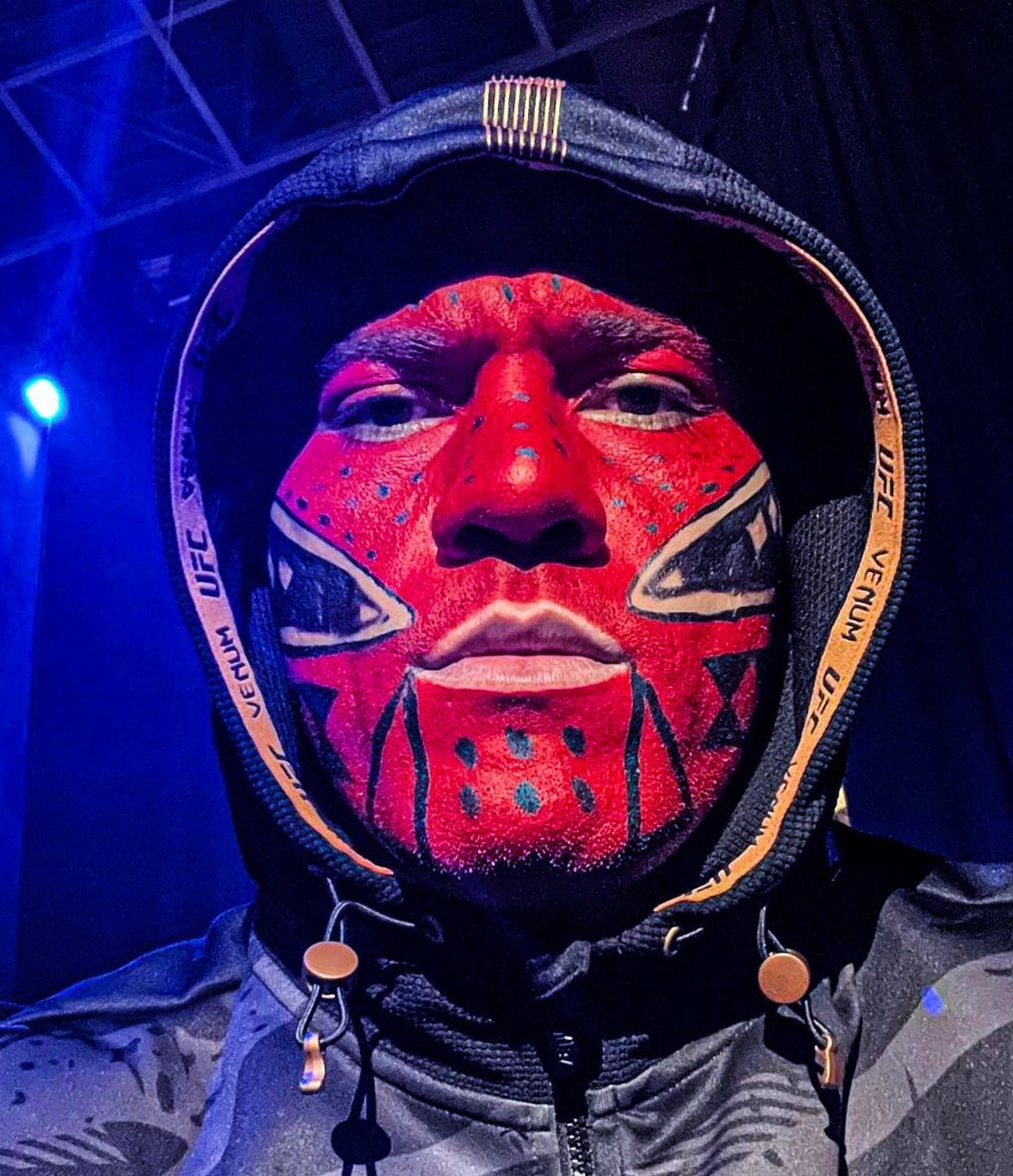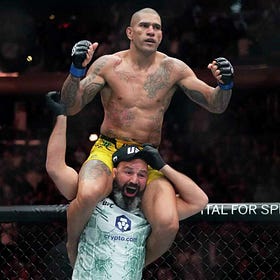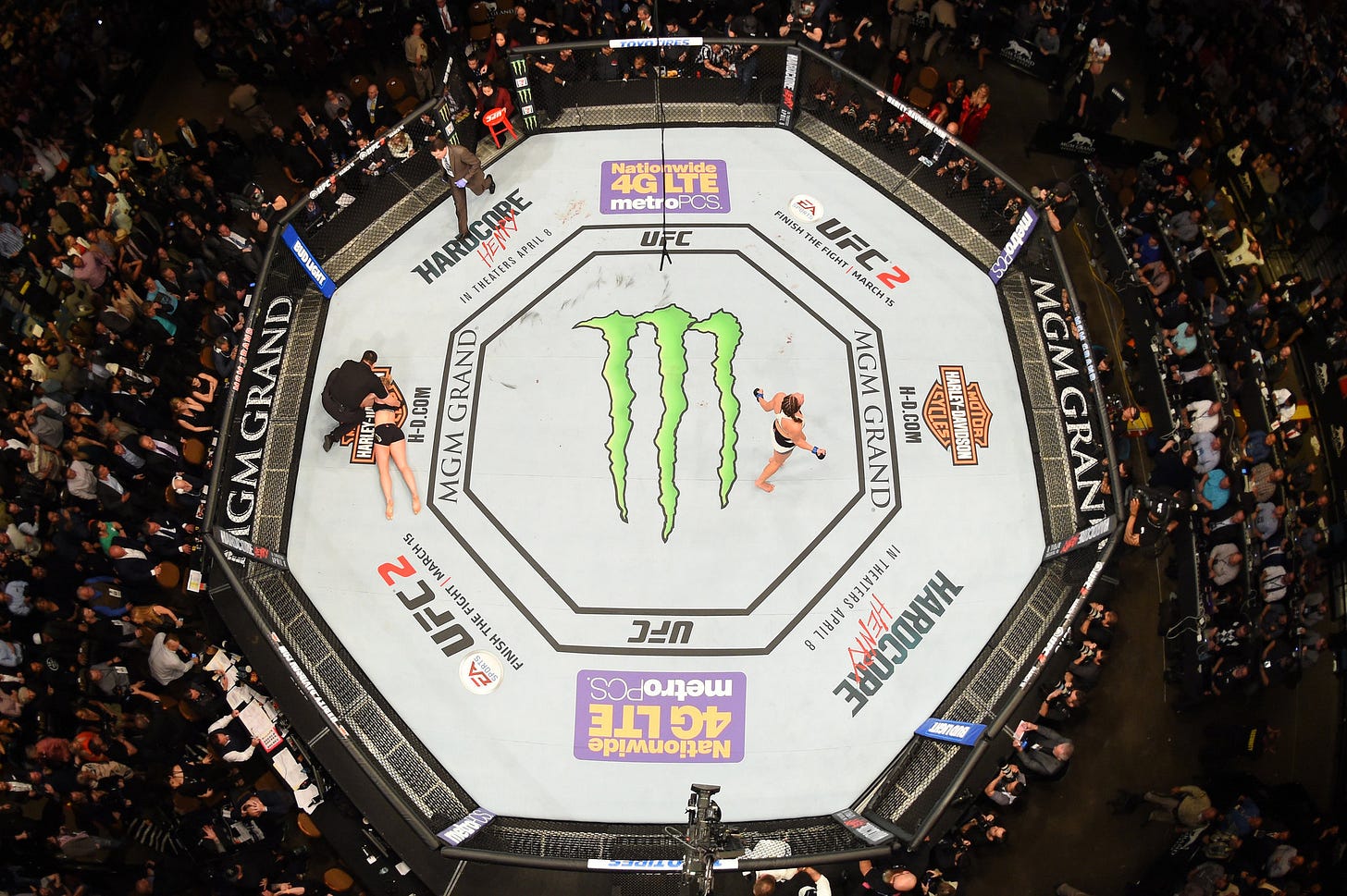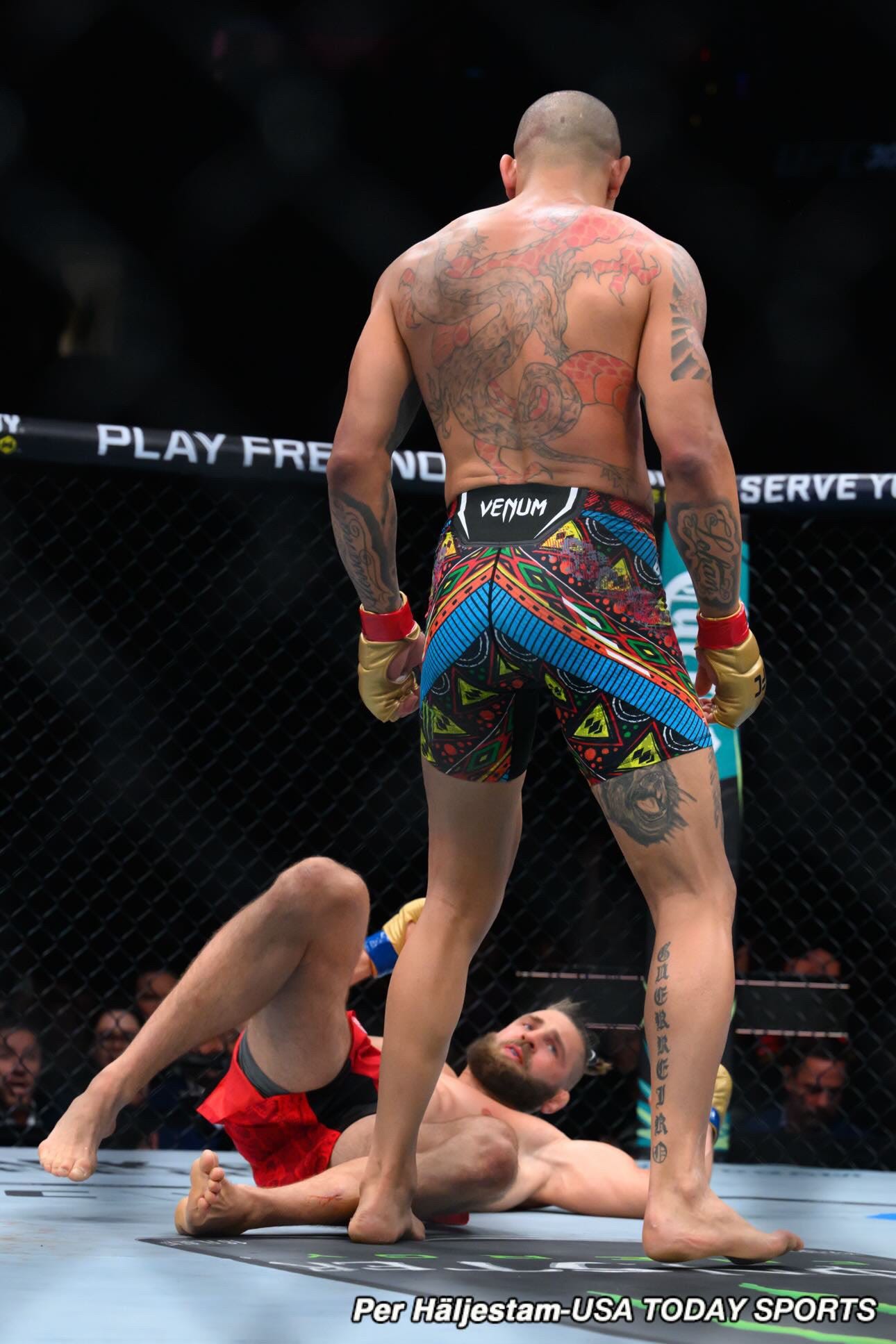UFC 303: How Alex Pereira Dismantled Jiri Prochazka
Chama. The Hunter Strikes Again.
Chama
Do not neglect the spiritual realm.
Alex Pereira ventured to the shamans of the Amazon to save UFC 303 from Conor McGregor’s absence. Prochazka, a man of great spiritual strength himself, pleaded Pereira to keep this fight between them as men. As his unconscious body was beaten into the canvas by Poatan, it was all too clear that those in the unseen realm had lent their strength to the reigning Light Heavyweight champion.
The man known as Poatan has become an undeniable star in the world of mixed martial arts. A loss to Adesanya as his lone blemish, the man has stormed through the Light Heavyweight division to turn that fight into an afterthought. He is a special fighter.
Pereira’s title winning performance against the Czech in their initial meeting was so exciting as a coronation of a new double weight class champion that it is easy to forget how successful Prochazka was for large portions of that bout. If this doesn’t ring a bell, read my breakdown of their initial meeting:
UFC 295: Violence at the Garden
Blood was spilled at MSG this past Saturday. Exciting action littered the prelims and unconscious bodies piled up as the main card progressed. Two fresh champions crowned and contenders emerging, UFC 295 was a massive event with more to analyze than the results would suggest.
Prochazka’s success was nowhere to be found in his second meeting with the Brazilian. Rather than conceding the initiative to his opponent, Alex Pereira utilized a wider range of tools to maintain and regain forward momentum. This front foot performance led to Alex Pereira kicking more frequently than I have seen in any of his previous performances. It is almost impossible to base one’s game plan on kicking while on the back foot, so Pereira ensured that whenever he found himself there it was not for long.
Disclaimer: The video clips included in this article are not owned by the author. They are included for educational purposes only to illustrate key moments in the fighter’s career and demonstrate aspects of mixed martial arts techniques and strategies. All rights to the video content belong to their respective owners.
Stanswers
Jiri Prochazka is an interesting fighter. He was the most offensively potent man in the division but his style guaranteed he received almost as much damage as he caused. I am personally a fan of his awkward movement, exaggerated feints, and commitment to gritting through hell to land his hellacious strikes.
It is unfortunate that despite the awe of his unorthodox game he rarely improves in meaningfully defensive ways. His legs were kicked to bits by Alexander Rakic before his emphatic knockout. Nothing has really changed. Rather than learning to defend low kicks, Prochazka often switched stances without any rhyme or reason. He would constantly move back into the opposite stance or hop through stances without any set up or meaningful offense directly following the switch. In all likelihood, he wants to keep the opponent guessing as to what he will be doing from either stance to maintain a tactical edge. Alex Pereira did not wait to find out and was well-prepared to damage Prochazka while in the open or closed stance orientation. Prochazka rarely hid his stance switches, so Pereira had quite an easy time adjusting his approach based on the stance.
V1: A summary of Pereira’s weapons in the closed stance. Prochazka darts into range with a long jab followed by a dipping jab. Pereira intercepts Prochazka’s dip with a jab as a pivots to his left. Pereira shows the rear hand to Prochazka and lands an outside leg kick, which he follows up by stepping into a jab, continue to show the lead hand to keep Jiri’s hands high, and end the sequence with a body jab that moves Prochazka backwards.
The majority of the fight was contested in the closed stance (both fighters are in orthodox, with their left hand and foot forward). Prochazka’s most glaring hole is his susceptibility to the low kick. As shown in the video, he opts for a long stance and puts most of his weight on the front foot. He is not prepared to lift it up or check as Pereira throws his kick as he comes down from his bounce or stops moving (V2).
V2: Pereira’s classic, no-tell outside low kick he lands as Jiri raises his lead hand.
Pereira’s jab pairs well with the low kick as a long, low-risk strike that can exploit the opponent choosing to the do the same (V1). Get the opponent jabbing, and they become easier to low-kick, and vice versa. Pereira has quite a versatile jab that was perfect to keep Prochazka occupied. His exaggerated head movement in response to strikes often meant he was easier to jab off feints, or that he didn’t move his head at all as the jab did not appear threatening enough. Pereira constantly found a home for his jab as Prochazka dipped, to move forward, and to force him backwards when he threw to the body.
V3: Pereira throws his outside low-kick but Prochazka attempts to throw two long lead hooks to counter the kick, which do not land as his lead foot is off-balanced from the kick. A good advice on counter-shots being short and snappy, landing before the opponent’s strike has an opportunity to.
Prochazka did try his hand at countering the low kick, once (V3), but opted for long, messy strikes rather than the low kicks traditional counter — the jab. Prochazka had no answers for Pereira’s jab and decided to switch to southpaw to deal with it (V4). He was able to occupy the space between their lead hands but was left reaching while heavy on the lead foot. Pereira promptly punished this strategy with a step-up outside low kick that threw him off-balance (V5).
V4: Pereira moves forward with a jab to the chest, prompting Prochazka to step back into southpaw. Now in the open-stance he opts to obtain wrist control and keep his lead hand occupying the path of Pereira’s own.
V6: While trying to paw at the lead hand from southpaw, Prochazka is left completely vulnerable on his heavy lead leg to a step-up inside low kick.
Prochazka thought that he was eliminating a weapon of Pereira’s by switching stances. The problem with such a drastic change to deal with the jab is that it simply clears the avenue for different weapons.
For instance, slipping, a dipping jab, and double jabbing would all be less exploitable options to try and deal with Pereira’s jab. Every habit is exploitable but the relative quickness and ease of execution mid-fight make them much harder for the opponent to capitalize upon quickly. Compare this with Prochazka’s naked stance switches. He is still very heavy on his lead foot and not executing any offense off the switch. With his arms occupied reaching for Pereira’s lead, Poatan has a free entry to kick the leg.
V7: Pereira lands a clean front kick to the body that Prochazka parries a moment too late.
Prochazka did not accomplish much from southpaw, and Pereira used the opportunity to kick into the body with both round and front kicks (V7). He kept a more reserved toolkit in the closed stance and threatened Prochazka with intermittent power shots in the open.
Sen 先
Pereira’s primary objective in this rematch was to retain the initiative and control the center of the octagon. He too often backed himself onto the cage in his first match with Prochazka. He was intimately aware of whenever he approached the black octagon “danger zone” encircling the center logo.
Whenever Pereira’s feet were on or past this black line he immediately moved forward with a jab to return to the center (V8). His body jab also became the perfect weapon to catch Prochazka on the chin as he advanced with his exaggerated dips (V9).
V8: Pereira finds his feet on the small black octagon encircling the center and steps forward with a jab to regain control of the center of the octagon.
V9: Pereira’s dipping jab catches Prochazka’s exaggerated dip, giving him a moment to circle back to the center of the cage.
The most reliable way to prevent an opponent from pressuring you is by landing a power shot of your own. Prochazka’s reckless march to the cage leave him open to Pereira’s left hook. He immediately has to compose himself and return to his stance. This was obvious to Pereira who is able to counter it easily (V10). Prochazka often would either be darting in with long shots, or marching forward with sloppy strikes. In moments where he is forced to recompose himself, his strike selection becomes more obvious.
V10: Pereira throws a left hook over Prochazka’s outstretched arm that backs him off before Pereira reaches the cage. Pereira dips outside a long jab from Prochazka with a body jab and follows up with a right hand over the top of the arm. Prochazka moves backwards to defend and Pereira moves forward out of the danger zone.
Pereira’s decision making was the cornerstone of being able to maintain the initiative, but some slight defensive tweaks shone out as well. Throughout the first fight Pereira backed up on straight lines, cowering away from Prochazka’s strikes with his long double forearms guard. Unlike a traditional boxing guard, Pereira keeps this guard forward of his head. The idea is that he can extend his arms to post or clinch, catch an opponents hooks, or catch and defend kicks. It is not useful at defending straight punches.
Pereira modified his use of the guard by pivoting more frequently and keeping his eyes on his prey the entire time. Introducing lateral movement gives Pereira the option to attack from a new angle or reach a position where the opponent is less likely to follow up on their strikes (V11) and moving his head a tad more while keeping his eyes forward lets him search for counter shots (V12, V13). Pivoting in and of itself is effective, but its ability to keep an opponent reacting to you is only elevated when paired with Pereira’s famous left hook.
V11: Pereira steps back into orthodox on an angle after landing an outside low kick (V3). As Pereira chases him backwards he throws up his long double forearms guard.
V12: Pereira intercepts Prochazka’s missed jab with his long guard and pushes him off by the shoulders. His eyes are wide open the entire time, taking note of Prochazka’s habits. The low rear hand is most apparent. As Prochazka steps in to jab again, Pereira pivots around his left hook to send Pereira stumbling and obtain a dominant / safe angle from which to work.
V13: Prochazka puts up a single arm to block after stepping back into orthodox from southpaw. Pereira throws his left hook into it anyway, pivots, intercepts Prochazka’s return hooks with his long guard, and ends the combo with a jab to the body. Choosing to attack the guard is also a great wrinkle to Pereira’s performance. It shows he is unafraid to land an imperfect shot, and is confident enough in his power that even a blocked shot will force Prochazka to react. Simply putting your hand up to your ear is not enough to address such a dangerous weapon, and he knows that.
Pereira’s pivoting, guard, and left hook synergized perfectly to deliver the knockdown at the end of the first (V14). Earlier exchanges exhibited Prochazka’s propensity to dash forward with his jab while keeping his rear hand at his waist. While he has put the guard up before, he did so without moving and standing directly in front of Pereira. This defensive consideration disappeared when Prochazka decided to be offensive, and it cost him. Pereira decided to take the opposite approach, pairing his defensive pivoting and guard with an offensive left hook gave him the optimal positioning from which to counter Prochazka and not get hit.
V14: Having already countered Prochazka’s forward moving jabs before, Pereira throws a long, almost non-committall left hook as Prochazka marches on, catching him on the chin to drop him.
The Finish
The first round was entirely controlled by Alex Pereira. Having done enough, he decided to finish the job.
Aesthetically and technically, this was a perfect switch kick. The switch itself was so fast, Prochazka barely had a moment to react (V15). Such is another problem with being a reactive fighter who’s hands are never in a position to defend. With a kick that fast, Prochazka would never have the time to bring his hands towards his head to defend, or stand up out of his long stance to check.
V15: Pereira opens the round with an incredibly fast switch kick. Prochazka actually reaches down as if to check or block a body / leg kick, but is instead met with Poatan’s shin to his dome.
A clip is making the rounds on social media showing Pereira’s coach describing the moment they saw Prochazka defending leg kicks in the locker room with his hands down. At that moment they decided to incorporate head kicks into the gameplan. While he did throw one the first round, they have never been a consistent weapon in Poatan’s MMA game.
It is easy to see why Alex Pereira has become so popular. The stoic stone-bodied man showcases a cool intensity both in and out of the ring. From his fluid offensive to deciding on the winning technique mere hours (if that) before the fight, this knockout artist has the MMA world in the palm of his hand.
I would love to see him challenge the Heavyweight division. He is not without flaws, and the capacity to which he can contest in the grappling with an elite talent is yet to be seen. This man seems to enact his will upon the world regardless. Where do you see Poatan going next?
Chama






